How to Navigate a Rut in Your Creative Life
words by Jess Cook
As I type this, my spinning wheel sits in a corner of my home office, gathering dust. I can’t tell you the last time I spun anything at all, let alone a whole skein – and I work for PLY! I’m surrounded by inspiration from all of you, and our amazing contributors, every single week. Yet for some reason, my own enthusiasm for the craft has waned, and I’m really not sure why.
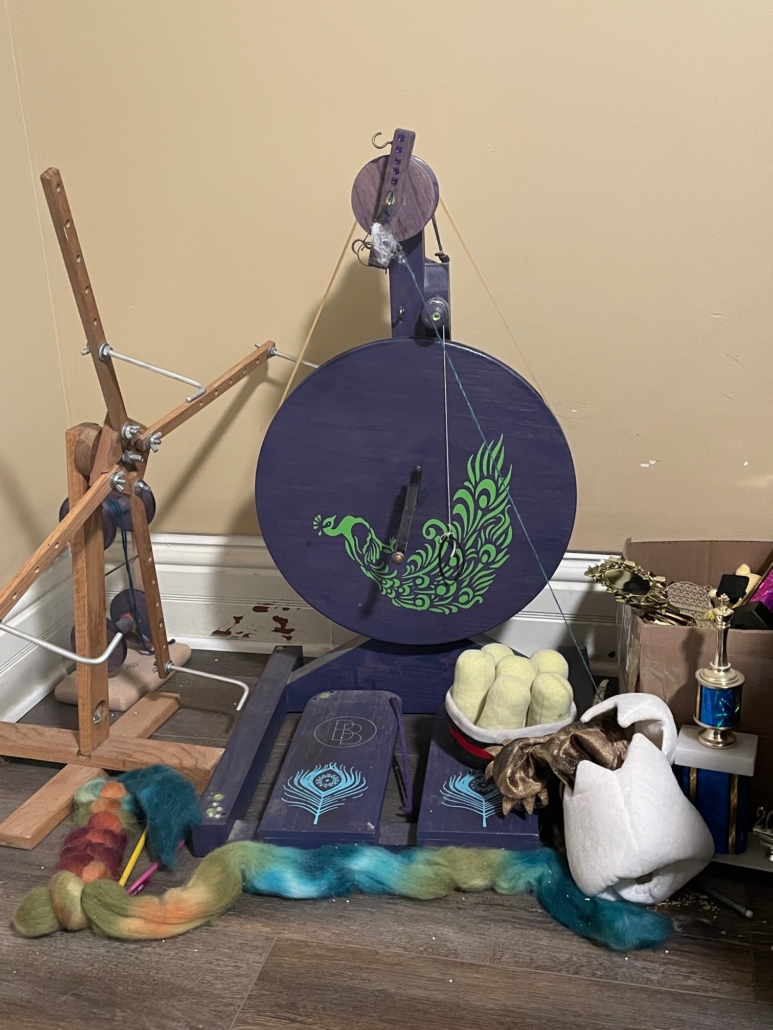
If you find yourself in a similar situation, now or in the future, here are some tips I’ve been gathering for how to handle a rut in your creative life.
Follow your enthusiasm
Enthusiasm is a fickle muse, and sometimes it leads us to unexpected places. If you’ve found yourself not making time for spinning, but you want to make that time, maybe you need to mix things up a little bit. Is there a new fiber type, prep, or dyer you’ve been dying to try? A new technique you want to experiment with at the wheel? Maybe you even hear a new tool calling your name. Whatever sparks that enthusiasm inside of you, follow it. You may just find a path right out of your rut.
On the other side, it may be time for you to fall back into what feels natural and comfortable. A familiar fiber, a favorite color combination, or a go-to technique might get you back into the groove again, like reuniting with an old friend. Whatever your enthusiasm is telling you, it’s best to listen to that inner voice.
Remove unnecessary restrictions
A wise woman once told me that I was inventing timelines in my head for things that didn’t need to be restricted that way, and she was absolutely right. What restrictions have you placed on your life as a spinner or creative that simply don’t need to be there? If you’ve been telling yourself that you have to finish Project A before starting Project B, or that you can only make time for spinning once your hallway closet has been reorganized, or that you can’t start a project if you won’t be able to finish it by next week – stop doing that! You’re giving yourself limits that don’t need to exist.
For me, this tends to be a problem when I agree to complete a project for someone else. I love to use my creative skills to make things for people I care about, but as soon as someone asks me to make something for them and I agree to it – I immediately don’t want to do that project. (As an example, I’ve been crocheting a bed-sized blanket for my best friend for over a year, because I can barely pull together the enthusiasm to make a single row most weeks.) If you’ve put yourself into a situation like that, it may help to give yourself deadlines, but also build in time to work on other projects that are more exciting so you don’t lose the creative spark altogether. For everything else, the timeline you’ve invented for yourself should only be allowed to persist if it motivates and helps you, not if it makes you feel boxed in and resentful.
Stash with intention
Stashing is another hobby altogether, and for me it comes in seasons. Sometimes I like having a large, varied stash so I know there will always be something to inspire me when I open the closet where it’s stored. Other times, having a large stash feels like a To Do list that’s hanging over my head, with an imaginary project for every braid and skein, weighing down on me and making me feel like I’ve buried myself under the weight of unfinished projects.
If your stash inspires you, put it somewhere you can see it, and visit it often. If it makes you feel overwhelmed or obligated, give it away or sell it! The sheep are growing new wool every day, so you can always get more. I have done this several times with all of my creative hobbies, and I always manage to get more supplies when I need them. Sometimes clearing out my stash to make room for something new is all the enthusiasm boost I need to get back into my hobbies again.
Go easy on yourself
The most important tip is to give yourself grace and peace in all things. If spinning isn’t calling to you right now, maybe it’s because your inner voice is trying to tell you to make room for something new, and that’s going to be just the thing you need in this season of your life. Time is a finite resource, and we’re under no obligation to parcel it out to every creative hobby at all times. If this needs to be a season of rest for you, let it be that. If you want to be creative but spinning isn’t calling to you, listen for the call of something else. Taking a break, for however long it lasts, doesn’t mean your life as a spinner is over. Give yourself time to do what you want and need most, and trust that you’ll come back to your wheel or spindle when the season for spinning returns in your life.
Harness the power of community
If you aren’t feeling inspired to spin alone at your house, find a local spinning group or make one yourself if there isn’t one nearby. You can also find a lot of inspiration in an online community – join us for one of PLY’s vlog sessions or use the hashtag #InspiredbyPLY on social media to find folks who are trying new techniques and projects they found in one of our issues. Use Ravelry or another site to find spinners who want to join a challenge together, or just share ideas and photos with other creative spinners around the world. There are so many ways that spinning can bring us together with others, and sometimes seeing the things other people are making is all the inspiration you’ll need to get back to your own projects.
Here’s to a New Year that brings us all creative inspiration, time to rest, and the peace that comes from balancing both.

Jess Cook is a middle school teacher and freelance content marketer, who also works for Team PLY as the head of our wholesale & advertising departments. She lives in the Nashville area with her 3 kids, a menagerie of pets, and a closet full of craft supplies. Find her online at tinyurl.com/jesscookonline.
PLY Magazine believes that Black lives matter, as well as LBGTQI+ lives. Those most vulnerable and persecuted in our communities deserve our love and support. Please be good to each other.
Did you know we also have a monthly PLY newsletter? Sign up here!
Did you know we also have a monthly PLY newsletter? Sign up here!

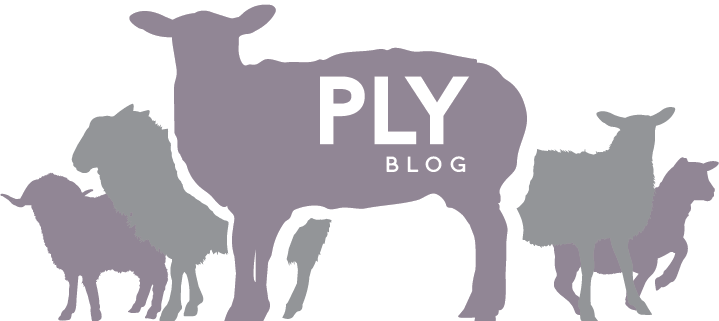
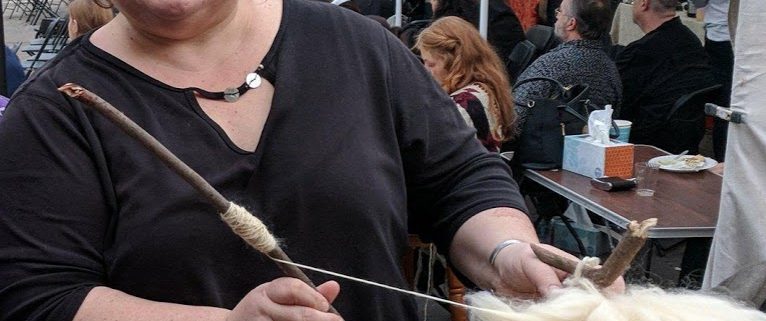
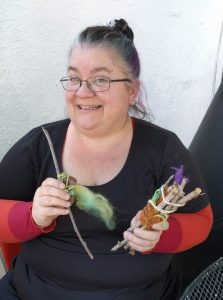
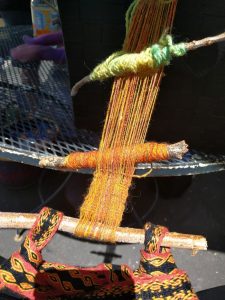 When you think about weaving at its core, it is simply a matter of wrapping strings around a collection of sticks and then manipulating strings among other strings. If you describe your loom, you’re telling me what shape your sticks have been arranged in: backstrap loom, inkle loom, rigid heddle loom, warp-weighted loom, four-harness – all are just descriptions of the shape of the sticks where you’ll manipulate the strings. I needed to demonstrate this description in a park one time, so I gathered a handful of sticks. I made some string on my drop spindle and proceeded to warp a small sampler. Need some heddles? Make more string. I didn’t need money or a large piece of equipment. I can make fabric with sticks and string.
When you think about weaving at its core, it is simply a matter of wrapping strings around a collection of sticks and then manipulating strings among other strings. If you describe your loom, you’re telling me what shape your sticks have been arranged in: backstrap loom, inkle loom, rigid heddle loom, warp-weighted loom, four-harness – all are just descriptions of the shape of the sticks where you’ll manipulate the strings. I needed to demonstrate this description in a park one time, so I gathered a handful of sticks. I made some string on my drop spindle and proceeded to warp a small sampler. Need some heddles? Make more string. I didn’t need money or a large piece of equipment. I can make fabric with sticks and string.